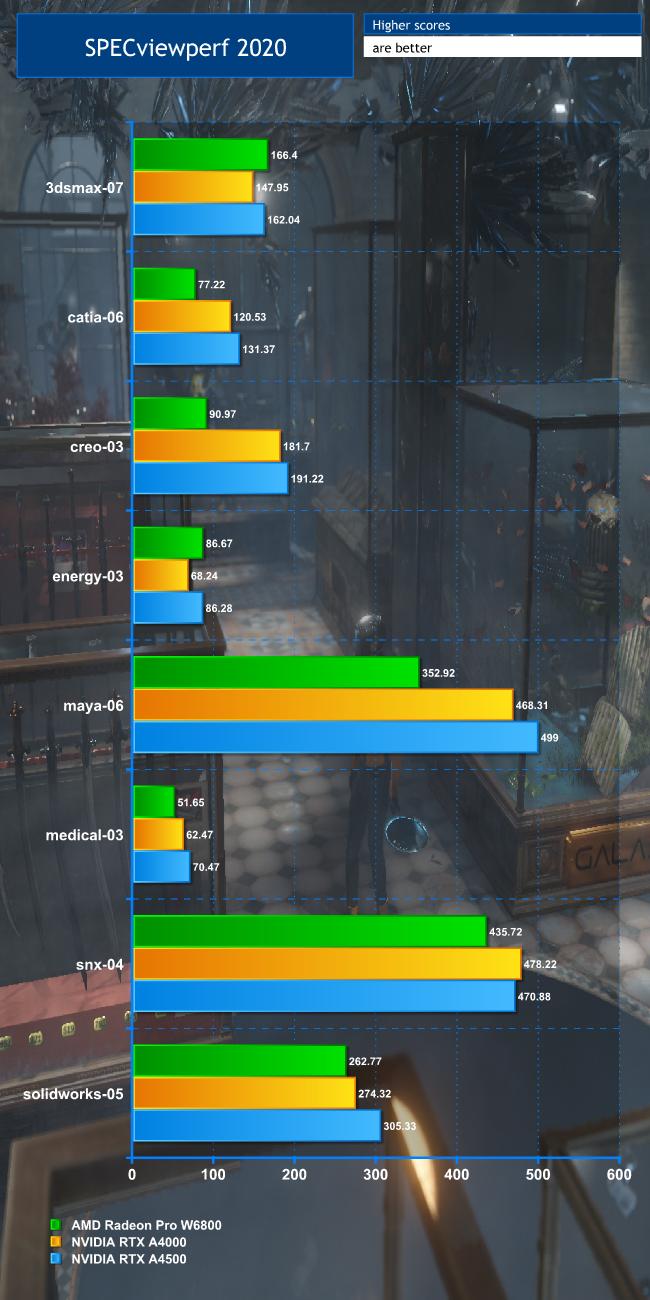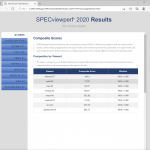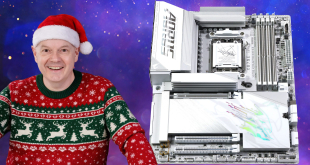SPECviewperf 2020
The SPECviewperf® 2020 benchmark, released on October 14, 2020, is the worldwide standard for measuring graphics performance based on professional applications. The benchmark measures the 3D graphics performance of systems running under the OpenGL and Direct X application programming interfaces. The benchmark’s workloads, called viewsets, represent graphics content and behaviour from actual applications, without the need to install the applications themselves.
Major updates in SPECviewperf 2020 include:
- New viewsets taken from traces of the latest versions of 3ds Max, Catia, Maya, and Solidworks applications.
- Updated models in the viewsets based on 3ds Max, Catia, Creo, Solidworks, and real-world medical applications.
- Support within all viewsets for both 2K and 4K resolution displays.
- User interface improvements, including better interrogation and assessment of underlying hardware, clickable thumbnails of screen grabs, and a new results manager.
- Support for running the benchmark using command-line options.
SPCviewperf is still the industry-standard professional 3D acceleration viewport test, including all the main workload categories for content creation.
In general, the NVIDIA RTX A4500 performed exactly as you would expect compared to the A4000, with one notable exception.
The NVIDIA RTX A4500 was 10 per cent faster than the NVIDIA Quadro RTX A4000 in the 3dsmax-07 viewset, but AMD's Radeon Pro W6800 wins this one, scoring three per cent ahead. This was its only significant victory, however.
The catia-06 viewset gave the A4500 a nine per cent benefit over the A4000, with the AMD card lagging noticeably behind.
The A4000's deficit over the A4500 was only five per cent with the creo-03 viewset, but the AMD Radeon Pro W6800 managed just half the performance.
The energy-03 viewset was the other test that was slightly positive for the AMD card. The W6800 was half a per cent ahead of the A4500, which was in turn a considerable 26 per cent faster than the A4000.
The maya-06 viewset gave the A4500 a seven per cent lead over the A4000, which in turn was 33 per cent ahead of the W6800.
With medical-03 the A4000 beat the W6800 by 21 per cent, while the A4500 was 13 per cent faster than the A4000. This viewset simulates activities such as MRI scanner outputs, and is extremely graphics-intensive.
The snx-04 viewset is based on Siemens NX, which is a very popular product design and engineering application. This was the most surprising result because the A4000 beat the A4500 by two per cent, which was confirmed by retesting.
Normal business was resumed with solidworks-05, however, which is also based on CAD software used frequently for product design. The A4000 was four per cent faster than the W6800, but the A4500 was 11 per cent quicker still.
Overall, the A4500 is generally at least 10 per cent faster than the A4000, which may not seem enough considering the price delta, but it certainly looks like better value than the A5000. However, the A4500 is a lot cheaper than the AMD Radeon Pro W6800. The latter has the advantage of 32GB of memory, though, which exceeds even the A5000.
 KitGuru KitGuru.net – Tech News | Hardware News | Hardware Reviews | IOS | Mobile | Gaming | Graphics Cards
KitGuru KitGuru.net – Tech News | Hardware News | Hardware Reviews | IOS | Mobile | Gaming | Graphics Cards






